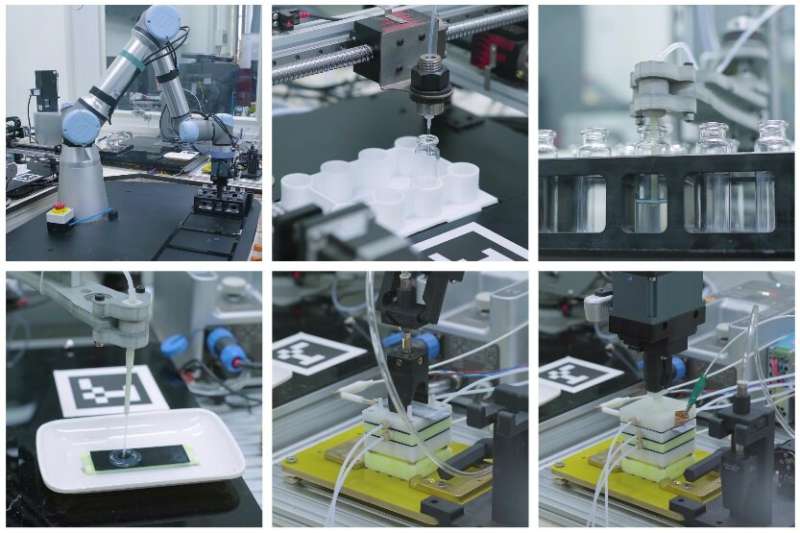Scientists investigate using lunar soils to sustainably supply oxygen and fuels on the moon

Building up a lunar settlement has been the ultimate aim of lunar exploitation since humanity's first step on the moon. Yet, limited fuel and oxygen supplies restrict human survival on the moon.
Combining photovoltaic and electrocatalysis, the artificial production of hydrocarbon fuels along with oxygen using carbon dioxide and water as the feedstocks has been demonstrably feasible on the Earth and is recognized as a potential strategy to be imitated in extraterrestrial sites. With the rapid progress of moon exploration, researchers have discovered that the moon's surface has considerable carbon dioxide and water reserves, which further confirms the feasibility of the idea.
Against this background, the joint research team of the University of Science and Technology of China, Nanjing University and China Academy of Space Technology found that the lunar soil brought back by the Chang'e 5 mission can be used as a catalyst to drive the electrocatalytic CO2 conversion for fuel and oxygen production.
This efficient extraterrestrial fuel and oxygen production system is expected to facilitate the development of human civilization toward extraterrestrial settlements. The research is published in the National Science Review.

"In situ resource utilization of lunar soil to achieve extraterrestrial fuel and oxygen production is vital for the human to carry out Moon exploitation missions. Considering that there are limited human resources at extraterrestrial sites, we proposed to employ the robotic system to perform the whole electrocatalytic CO2 conversion system setup," says Yujie Xiong, one of the lead authors of this study.
The lunar soil used in this research was provided by the China National Space Administration (CNSA) (sample number: CE5C0400), which is the first lunar soil brought back to the Earth since the Soviet Union's LUNA 24 mission in 1976. The researchers used the moon soil as a catalyst and directly loaded the copper on the lunar soil.
The lunar soil was loaded with Cu species and employed for electrocatalytic CO2 conversion, demonstrating significant production of methane. In addition, the selected component in lunar soil loaded with Cu could reach a CH4 production rate of 0.8 mL/min and an O2 production rate of 2.3 mL/min at 600 mA/cm2.
"Due to the complex system setup, the unmanned operation of the CO2 conversion system is considered to be one of the bottlenecks to realize the application of the technology," Yujie Xiong explains.
Given the limited labor force at extraterrestrial sites, it is highly desirable to operate such an electrocatalytic CO2 conversion by a robotic system. In this regard, the research team tried to simplify the electrocatalytic CO2 conversion system setup to meet the operational requirements of the robotic system. Their developed robotic system could operate the whole process from catalyst preparation to electrocatalytic system setup.
More information: Yuan Zhong et al, In situ resource utilization of lunar soil for highly efficient extraterrestrial fuel and oxygen supply, National Science Review (2022). DOI: 10.1093/nsr/nwac200
Provided by Science China Press




















